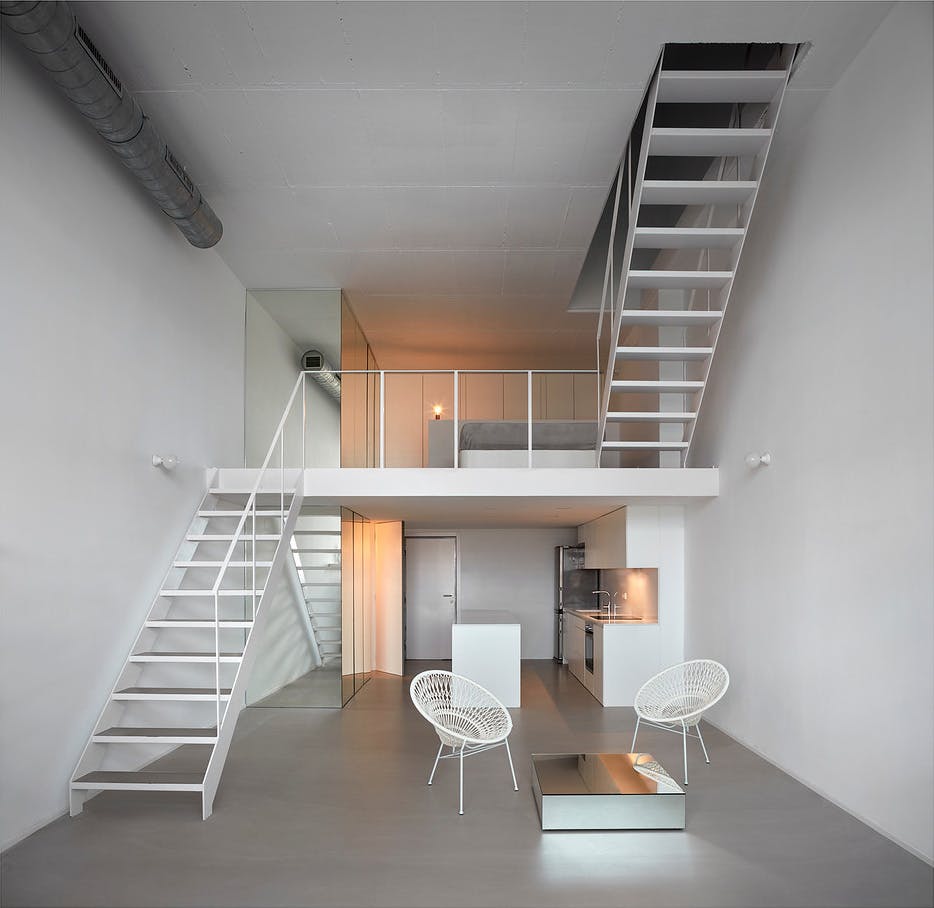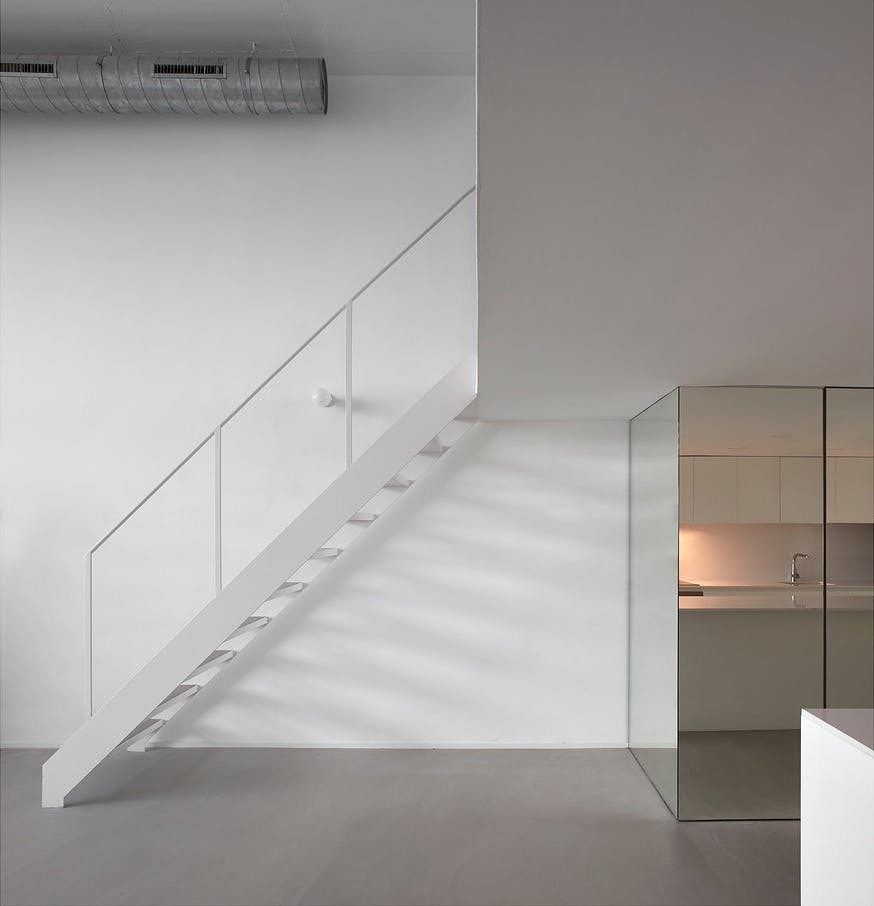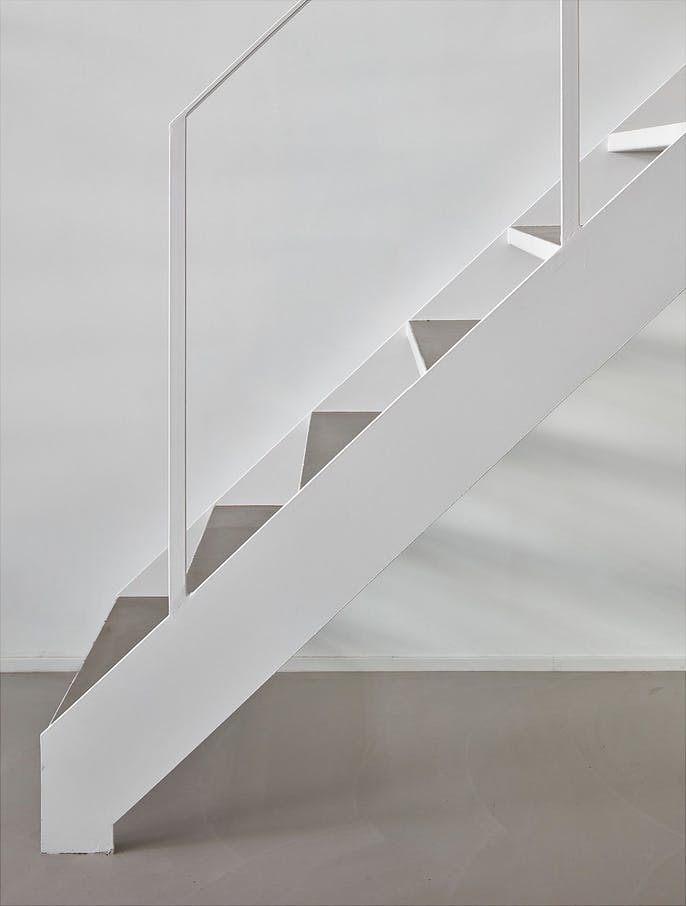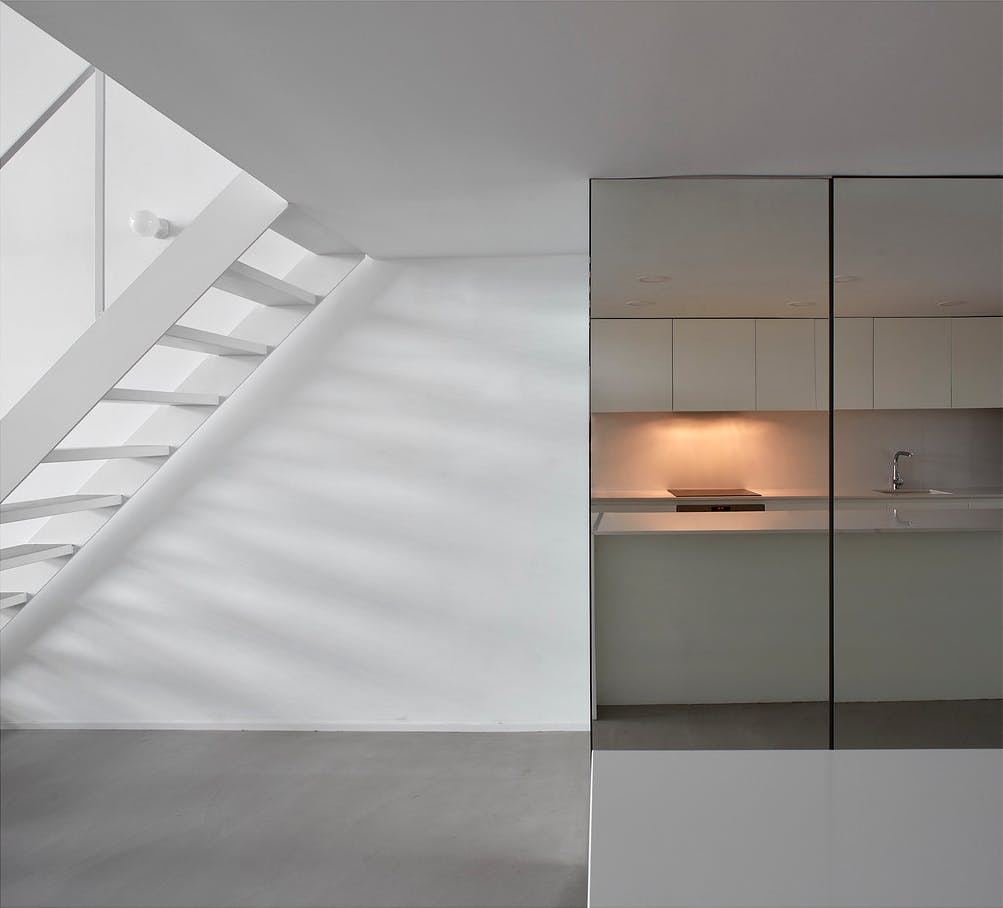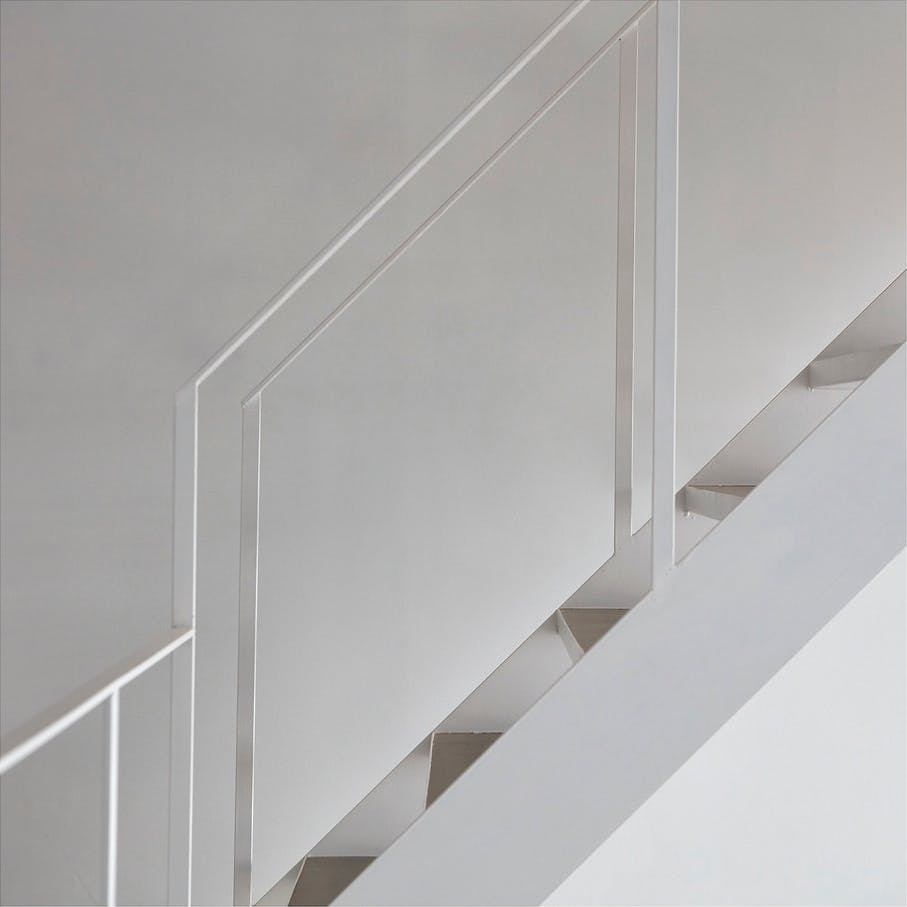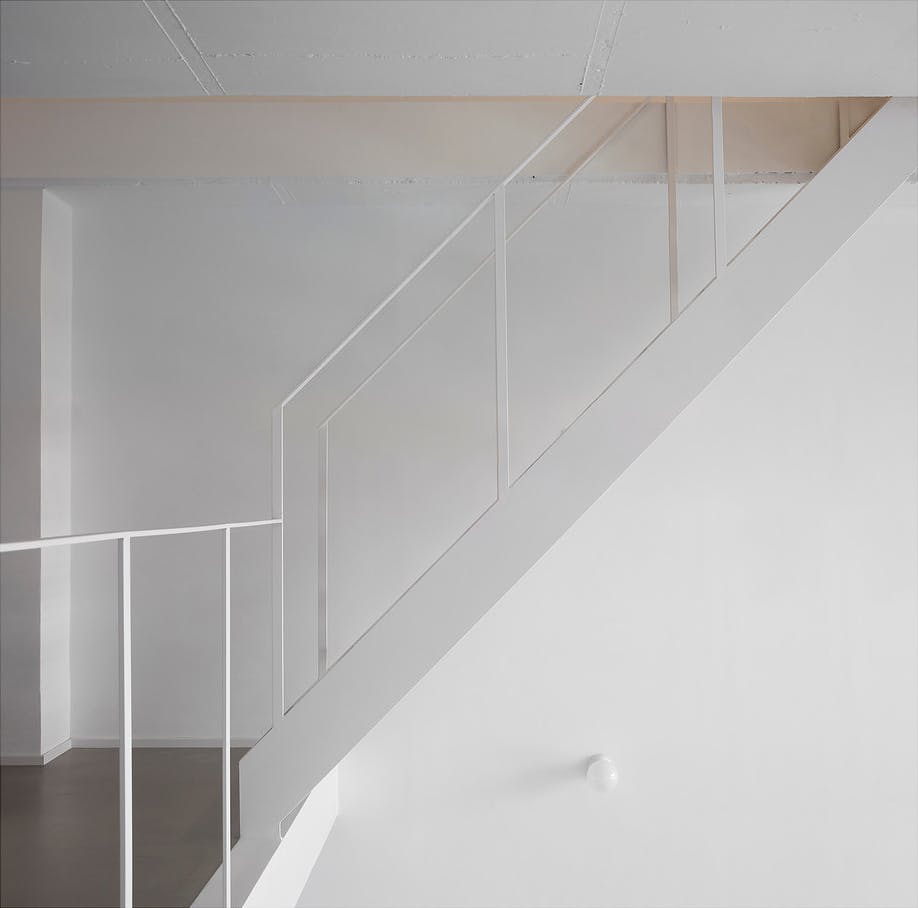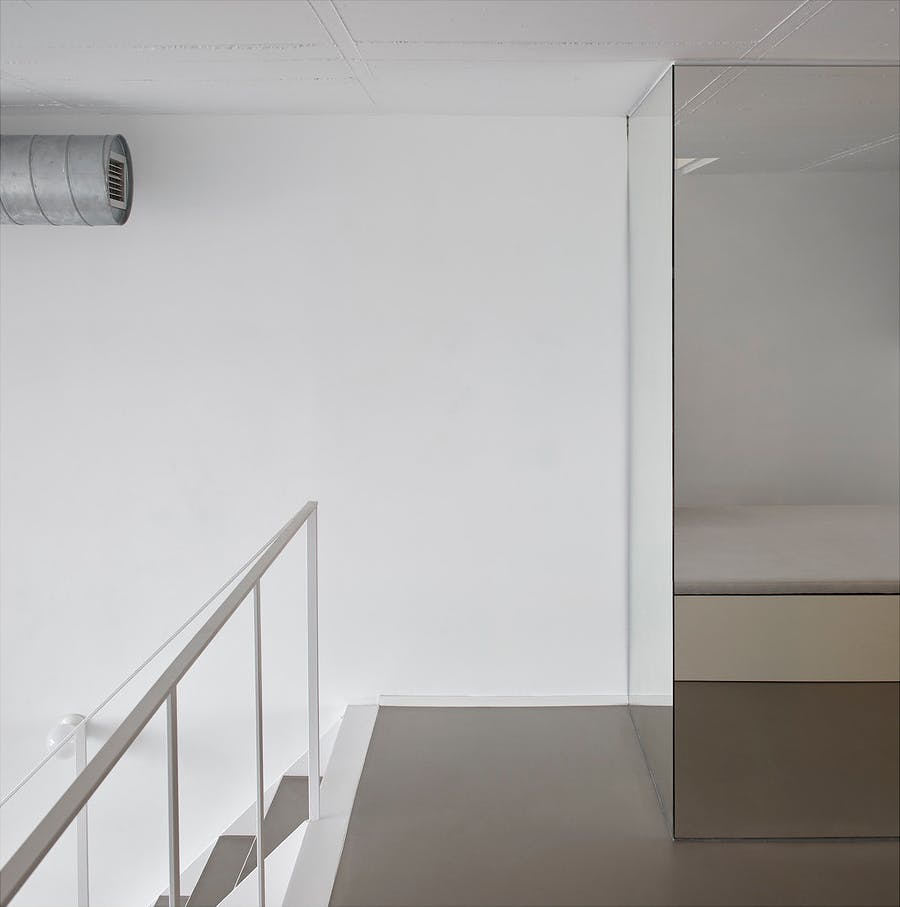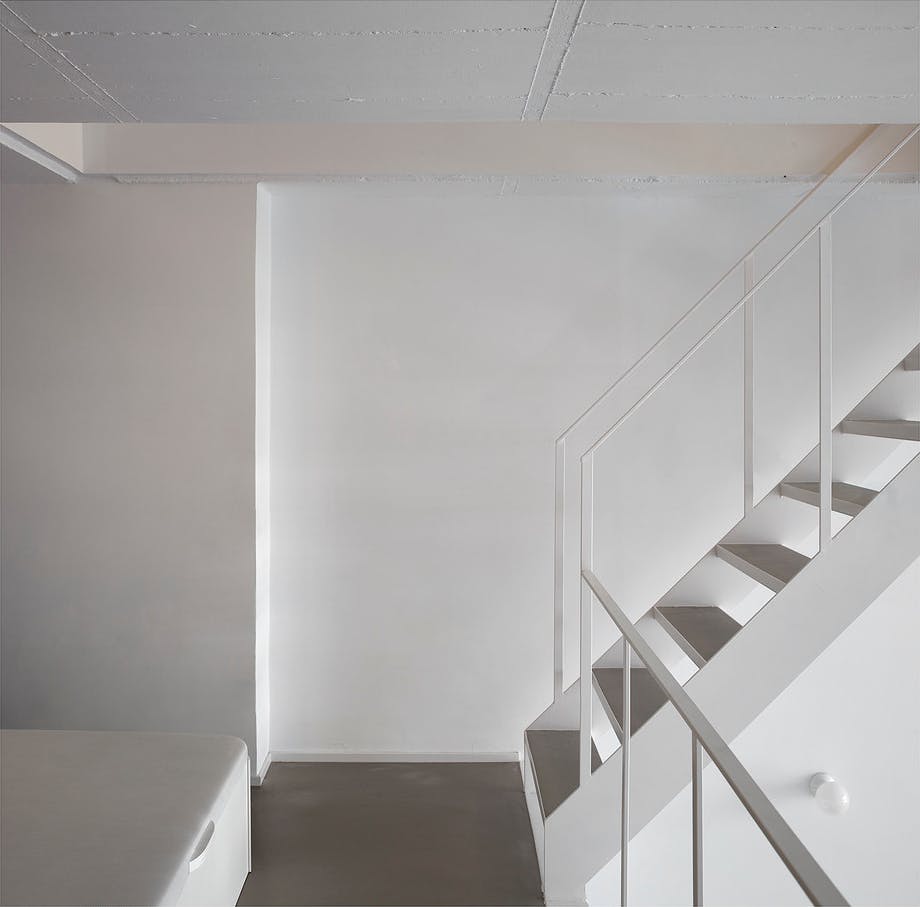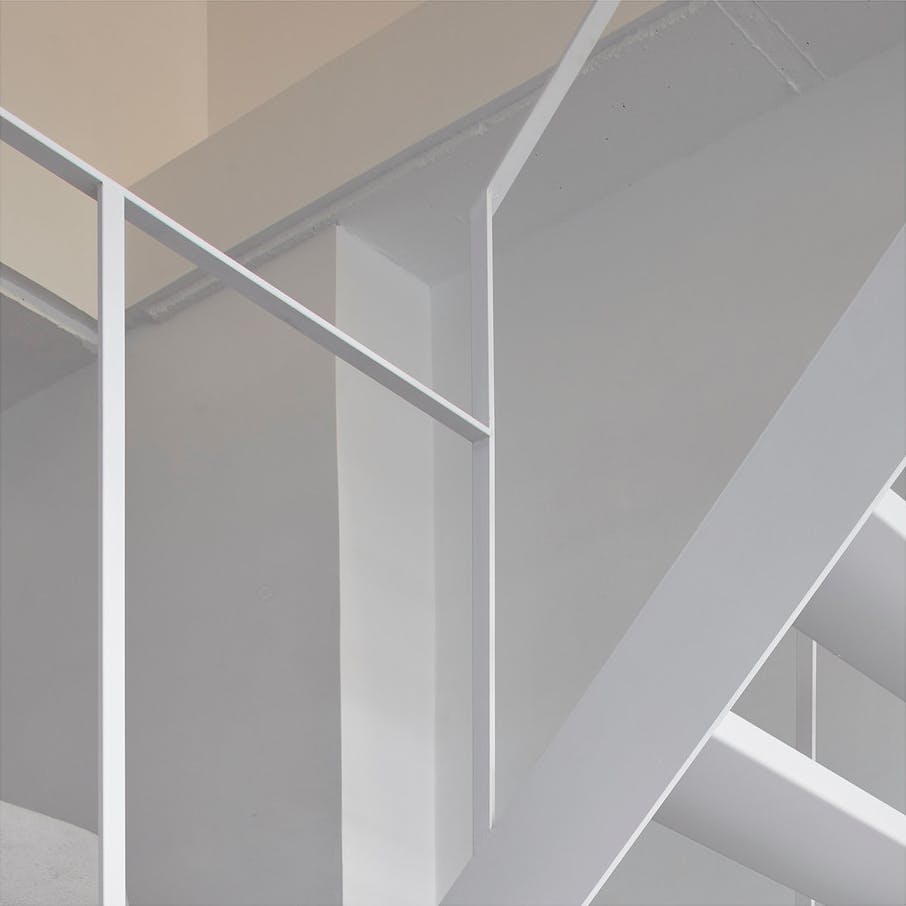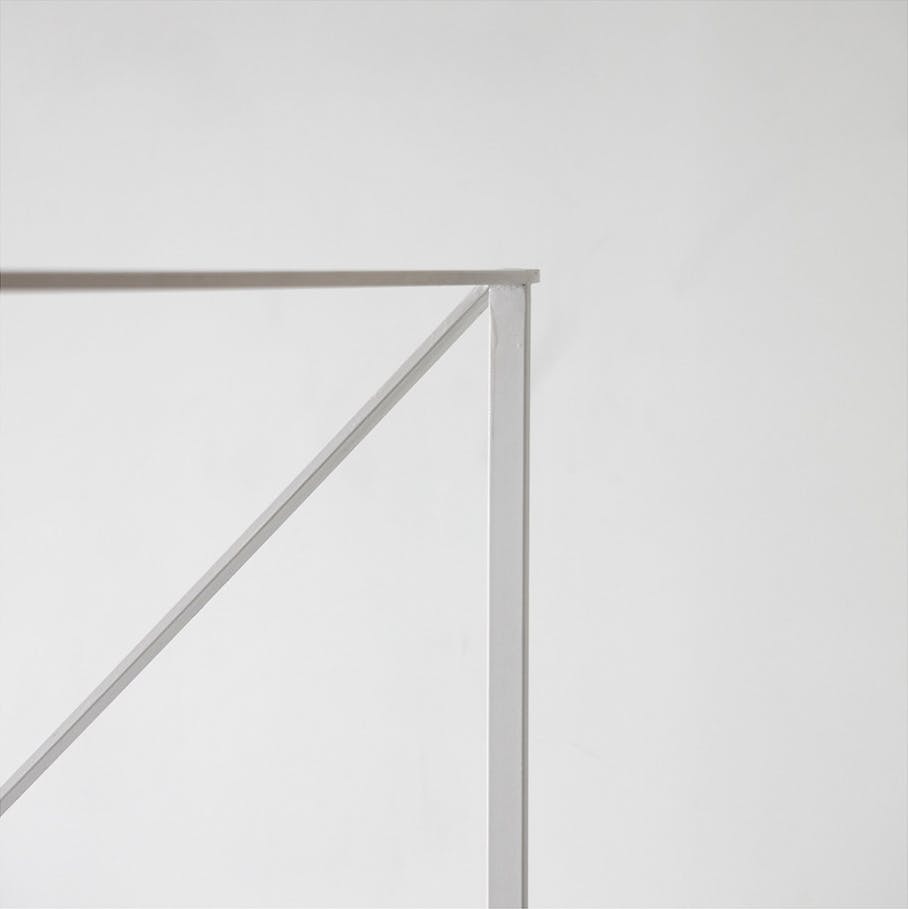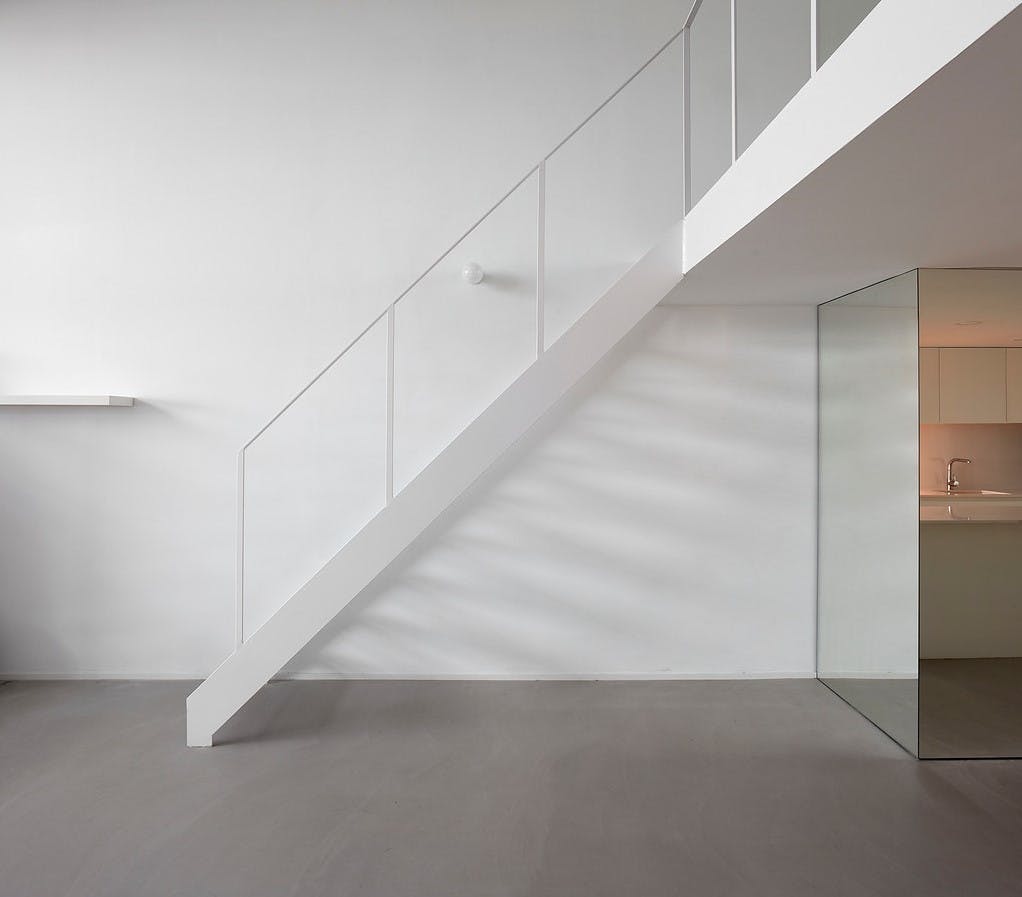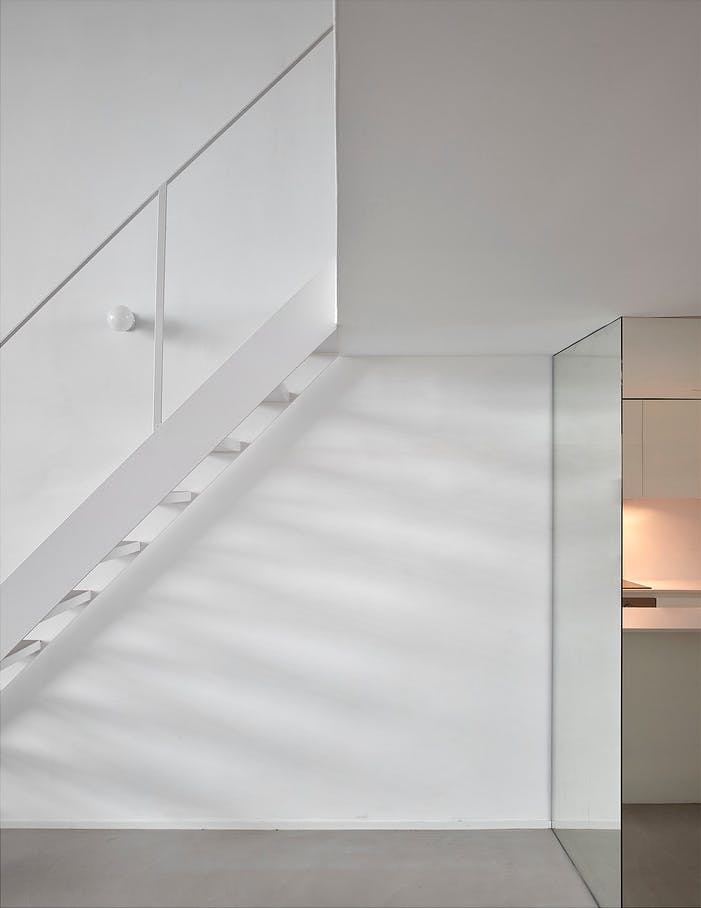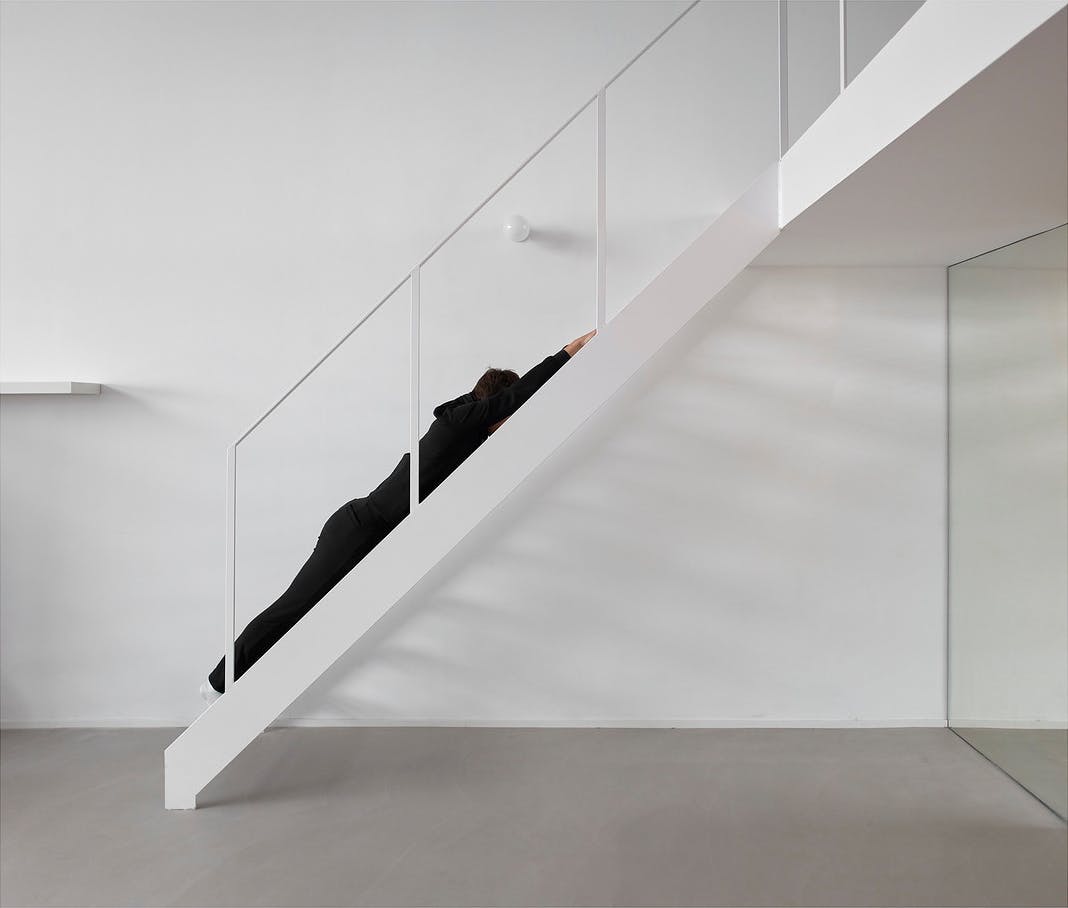We are faced with an open-plan office space, dark, with a double height and a challenge: to convert it into a space with spacious and luminous quality.
The original planfloor consists of a two-storey space, with a main floor and a small loft accessed via a staircase at the entrance. There is only an enclosed space on the ground floor with a small toilet. From the top floor there is access to the terrace via a second staircase.
The intervention proposes to place the kitchen in the entrance area, the living/dining room on the double height and a bedroom on the upper floor.
It was decided to enlarge the mezzanine and modify the position of the staircase to gain as much space as possible and to be able to include, in addition to the bed, a dressing room and a bathroom.
In order to achieve greater luminosity in the space, the colour white gains prominence and all the metallic elements of the stairs and handrails are reduced to the minimum expression. The two closed spaces on the ground floor and first floor are covered with mirrors to reflect the light that enters through the large window, illuminating the back of the space.
The concrete floor gives unity to the space, increasing the spatial relationship between its individual parts.
Nos encontramos ante un espacio de oficinas diáfano, oscuro, con una doble altura y ante un reto: convertirlo en una vivienda con calidad espacial y luminosa.
La distribución original consiste a en un espacio en dos plantas, con una planta principal y un peque o altillo al que se accede a por una escalera situada en la entrada. Solo dispone a de un espacio cerrado en planta baja con un peque o aseo. Desde el altillo se accede a con una segunda escalera a la terraza.
La intervención plantea situar la cocina en la zona de la entrada, el salón-comedor justo en la doble altura y una habitación en la planta superior.
Se decide ampliar el altillo y modificar la posición de la escalera para ganar el máximo de espacio posible y poder alojar, además de la cama, un vestidor y un baño.
Para conseguir una mayor luminosidad en el espacio, el color blanco gana protagonismo y se aligeran todos los elementos metálicos de escaleras y barandillas, quedando reducidos a la mínima expresión. Los dos espacios cerrados que aparecen en planta baja y planta primera se revisten con espejos de manera que refleje la luz que entra por el gran ventanal, iluminando el fondo el espacio.
El suelo continuo cementoso da unidad al espacio, aumentando la relación espacial entre sus partes.
Wir stehen vor einer spannenden Herausforderung - einem ehemals dunklen Großraumbüro mit doppelter Höhe, das in eine Wohnung mit großzügiger Raumaufteilung und lichtdurchfluteter Qualität umgestaltet werden soll.
Der ursprüngliche Grundriss besteht aus einem zweigeschossigen Raum mit einem Hauptgeschoss und einem kleinen Zwischengeschoss, das über eine Treppe am Eingang zugänglich ist. Im Erdgeschoss gibt es nur einen geschlossenen Raum mit einer kleinen Toilette. Vom Dachgeschoss aus führt eine weitere Treppe auf die Terrasse.
Der Entwurf sieht vor, die Küche im Eingangsbereich, das Wohn-Esszimmer auf der Zwischenebene und ein Schlafzimmer im Obergeschoss unterzubringen.
Es wurde beschlossen, das Zwischengeschoss zu vergrößern und die Position der Treppe zu ändern, um so viel Platz wie möglich zu gewinnen und neben dem Bett auch ein Ankleidezimmer und ein Badezimmer unterbringen zu können.
Um eine größere Helligkeit im Raum zu erreichen, wird die Farbe Weiß in den Vordergrund gestellt und alle metallischen Elemente der Treppe und des Geländers werden auf ein Minimum reduziert. Die beiden geschlossenen Räume im Erdgeschoss und im ersten Stock sind mit Spiegeln verkleidet, um das durch das große Fenster einfallende Licht zu reflektieren und den hinteren Teil des Raumes zu beleuchten.
Der durchgehende Zementboden verleiht dem Raum eine Einheit und verstärkt die räumliche Beziehung zwischen seinen Teilen.
